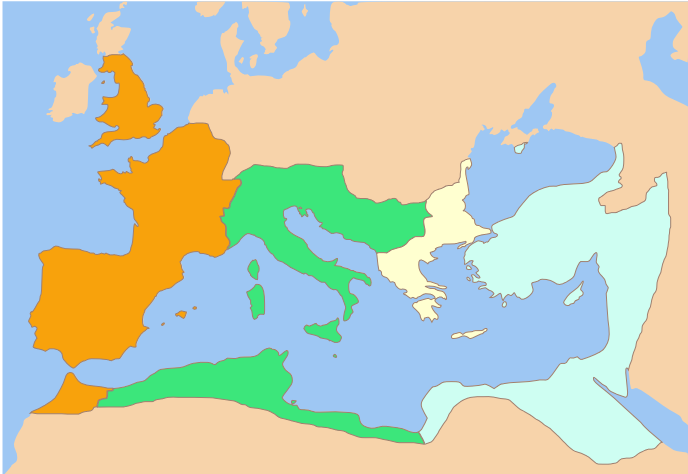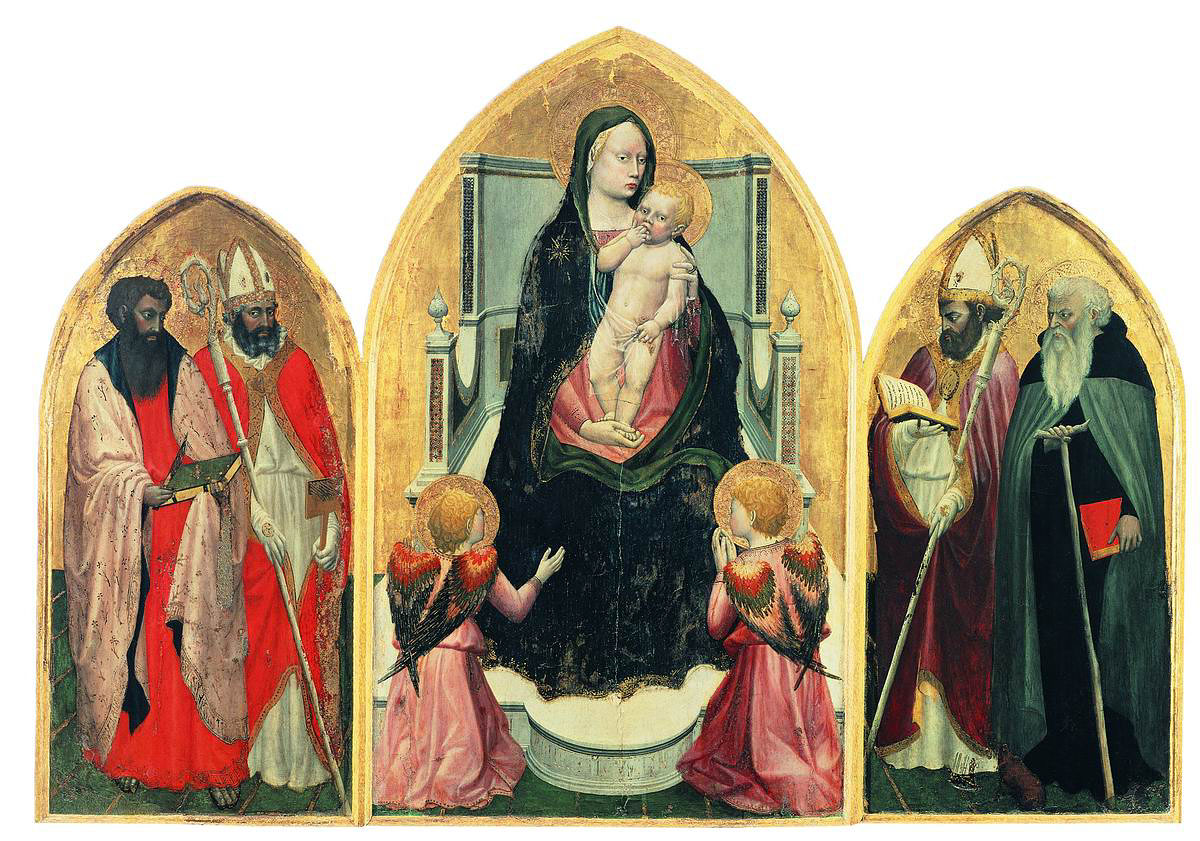|
Caesarius Of Nazianzus
Caesarius of Nazianzus (Greek: Καισάριος ό Ναζιανζήνος; c. 331 – 368) was a prominent physician and politician. He is best known as the younger brother of Gregory of Nazianzus. He is recognized as a saint in the Eastern Orthodox Church and the Roman Catholic Church. Biography The younger son of Gregory the Elder, bishop of Nazianzus, and his wife, Nonna, Caesarius was born at the family villa of Arianzus, near Nazianzus. He probably studied at Caesarea Mazaca in Cappadocia in preparation for the elite schools of Alexandria in Egypt. His favourite studies there were geometry, astronomy and especially medicine. In the last-named science, he surpassed all his fellow students. About 355 he came to the imperial capital Constantinople, and had already acquired a great reputation for his medical skill, when his brother Gregory, homeward bound from Athens, appeared there about 358. Caesarius sacrificed a remunerative and honourable post to return home with Greg ... [...More Info...] [...Related Items...] OR: [Wikipedia] [Google] [Baidu] |
Eastern Orthodox Church
The Eastern Orthodox Church, officially the Orthodox Catholic Church, and also called the Greek Orthodox Church or simply the Orthodox Church, is List of Christian denominations by number of members, one of the three major doctrinal and jurisdictional groups of Christianity, with approximately 230 million baptised members. It operates as a Communion (Christian), communion of autocephalous churches, each governed by its Bishop (Orthodox Church), bishops via local Holy Synod, synods. The church has no central doctrinal or governmental authority analogous to the pope of the Catholic Church. Nevertheless, the Ecumenical Patriarch of Constantinople is recognised by them as ''primus inter pares'' (), a title held by the patriarch of Rome prior to 1054. As one of the oldest surviving religious institutions in the world, the Eastern Orthodox Church has played an especially prominent role in the history and culture of Eastern Europe, Eastern and Southeastern Europe. Since 2018, the ... [...More Info...] [...Related Items...] OR: [Wikipedia] [Google] [Baidu] |
Constantius II
Constantius II (; ; 7 August 317 – 3 November 361) was Roman emperor from 337 to 361. His reign saw constant warfare on the borders against the Sasanian Empire and Germanic peoples, while internally the Roman Empire went through repeated civil wars, court intrigues, and usurpations. His religious policies inflamed domestic conflicts that would continue after his death. Constantius was a son of Constantine the Great, who elevated him to the imperial rank of '' Caesar'' on 8 November 324 and after whose death Constantius became ''Augustus'' together with his brothers, Constantine II and Constans on 9 September 337. He promptly oversaw the massacre of his father-in-law, an uncle, and several cousins, consolidating his hold on power. The brothers divided the empire among themselves, with Constantius receiving Greece, Thrace, the Asian provinces, and Egypt in the east. For the following decade a costly and inconclusive war against Persia took most of Constantius's time and at ... [...More Info...] [...Related Items...] OR: [Wikipedia] [Google] [Baidu] |
Byzantine Saints
The Byzantine Empire, also known as the Eastern Roman Empire, was the continuation of the Roman Empire centred on Constantinople during late antiquity and the Middle Ages. Having survived the events that caused the fall of the Western Roman Empire in the 5th centuryAD, it endured until the fall of Constantinople to the Ottoman Empire in 1453. The term 'Byzantine Empire' was coined only after its demise; its citizens used the term 'Roman Empire' and called themselves 'Romans'. During the early centuries of the Roman Empire, the western provinces were Latinised, but the eastern parts kept their Hellenistic culture. Constantine I () legalised Christianity and moved the capital to Constantinople. Theodosius I () made Christianity the state religion and Greek gradually replaced Latin for official use. The empire adopted a defensive strategy and, throughout its remaining history, experienced recurring cycles of decline and recovery. It reached its greatest extent unde ... [...More Info...] [...Related Items...] OR: [Wikipedia] [Google] [Baidu] |
369 Deaths
__NOTOC__ Year 369 ( CCCLXIX) was a common year starting on Thursday of the Julian calendar. At the time, it was known as the Year of the Consulship of Galates and Victor (or, less frequently, year 1122 ''Ab urbe condita''). The denomination 369 for this year has been used since the early medieval period, when the Anno Domini calendar era became the prevalent method in Europe for naming years. Events By place Roman Empire * Spring – Emperor Valens crosses the Danube, and attacks the Gothic tribes (Greuthungi and Tervingi). Valens and Athanaric, the Gothic king, eventually sign a treaty. * Fritigern becomes king of the Visigoths; amidst hostilities with his rival Athanaric, he asks Valens and the Thracian field army to intervene. They end the civil war, and Fritigern converts to Christianity. * Count Theodosius brings Britain fully back to the Empire after the Great Conspiracy of 367. Persia * King Shapur II occupies the pro-Roman kingdom of Armenia. He besieg ... [...More Info...] [...Related Items...] OR: [Wikipedia] [Google] [Baidu] |
Migne
Jacques Paul Migne (; 25 October 1800 – 24 October 1875) was a French priest who published inexpensive and widely distributed editions of theological works, encyclopedias, and the texts of the Church Fathers, with the goal of providing a universal library for the Catholic priesthood. The ''Patrologia Latina'' and the '' Patrologia Graeca'' (along with the ''Monumenta Germaniae Historica'') are among the great 19th century contributions to the scholarship of patristics and the Middle Ages. Within the Roman Catholic Church, Migne's editions put many original texts for the first time into the hands of the priesthood. Biography Migne was born in Saint-Flour, Cantal and studied theology at the University of Orléans. He was ordained in 1824 and placed in charge of the parish of Puiseaux, in the diocese of Orléans, where his uncompromisingly Catholic and royalist sympathies did not coincide with local patriotism and the new regime of the Citizen-King. In 1833, after fal ... [...More Info...] [...Related Items...] OR: [Wikipedia] [Google] [Baidu] |
Theodosian Code
The ''Codex Theodosianus'' ("Theodosian Code") is a compilation of the laws of the Roman Empire under the Christian emperors since 312. A commission was established by Emperor Theodosius II and his co-emperor Valentinian III on 26 March 429 and the compilation was published by a constitution of 15 February 438. It went into force in the eastern and western parts of the empire on 1 January 439. The original text of the codex is also found in the ''Breviary of Alaric'' (also called ''Lex Romana Visigothorum''), promulgated on 2 February 506 by Visigoth King Alaric II. Development On 26 March 429, Emperor Theodosius II announced to the Senate of Constantinople his intention to form a committee to codify all of the laws (''leges'', singular ''lex'') from the reign of Constantine up to Theodosius II and Valentinian III.Peter Stein, pp. 37–38 The laws in the code span from 312 to 438, so by 438 the "volume of imperial law had become unmanageable". Twenty-two scholars, working in ... [...More Info...] [...Related Items...] OR: [Wikipedia] [Google] [Baidu] |
Procopius (usurper)
Procopius (; Ancient Greek: Προκόπιος; July 325 – 27 May 366) was a Roman usurper against Valens. Life Procopius was born in July 325, in Corycus, Cilicia (now Turkey). On his mother's side, Procopius was a maternal cousin to Emperor Julian, since their maternal grandfather was Julius Julianus. His first wife was probably Artemisia. The Roman general of the 5th century Procopius and his son, the Emperor Anthemius, were among his descendants, the first being the son of his son Procopius. During the reign of Constantius II, he served as ''tribunus et notarius'' for a long period of time. By 358, the emperor trusted him enough to send him with Lucillianus as an envoy to the Sassanid court. His career granted him the opportunity to build many important connections, as well as to help him understand the structure of the imperial government. Persian campaign When Julian departed from Constantinople in the spring of 362, his objective was clear: to launch a swift, ... [...More Info...] [...Related Items...] OR: [Wikipedia] [Google] [Baidu] |
Baptism
Baptism (from ) is a Christians, Christian sacrament of initiation almost invariably with the use of water. It may be performed by aspersion, sprinkling or affusion, pouring water on the head, or by immersion baptism, immersing in water either partially or completely, traditionally three times, once for each person of the Trinity. The synoptic gospels recount that John the Baptist baptism of Jesus, baptized Jesus., , Baptism is considered a sacrament in most churches, and as an ordinance (Christian), ordinance in others. Baptism according to the Trinitarian formula, which is done in most mainstream Christian denominations, is seen as being a basis for Christian ecumenism, the concept of unity amongst Christians. Baptism is also called christening, although some reserve the word "christening" for the Infant baptism, baptism of infants. In certain Christian denominations, such as the Catholic Churches, Eastern Orthodox Churches, Oriental Orthodox Churches, Assyrian Church of t ... [...More Info...] [...Related Items...] OR: [Wikipedia] [Google] [Baidu] |
Plague (disease)
Plague is an infectious disease caused by the bacterium '' Yersinia pestis''. Symptoms include fever, weakness and headache. Usually this begins one to seven days after exposure. There are three forms of plague, each affecting a different part of the body and causing associated symptoms. Pneumonic plague infects the lungs, causing shortness of breath, coughing and chest pain; bubonic plague affects the lymph nodes, making them swell; and septicemic plague infects the blood and can cause tissues to turn black and die. The bubonic and septicemic forms are generally spread by flea bites or handling an infected animal, whereas pneumonic plague is generally spread between people through the air via infectious droplets. Diagnosis is typically by finding the bacterium in fluid from a lymph node, blood or sputum. Those at high risk may be vaccinated. Those exposed to a case of pneumonic plague may be treated with preventive medication. If infected, treatment is with antibiotics a ... [...More Info...] [...Related Items...] OR: [Wikipedia] [Google] [Baidu] |
İznik
İznik () is a municipality and district of Bursa Province, Turkey. Its area is 753 km2, and its population 44,236 (2022). The town is at the site of the ancient city of Nicaea, from which the modern name derives. The town lies in a fertile basin at the eastern end of Lake İznik, with ranges of hills to the north and south. As the crow flies, the town is only southeast of Istanbul but by road it is around the Gulf of İzmit. It is by road from Bursa. İznik has been a district centre of the province of Bursa since 1930 but belonged to the district of Kocaeli between 1923 and 1927. It was a township of Yenişehir district (connected to Bilecik before 1926) between 1927 and 1930. Ancient Nicaea was ringed with walls that survive to this day, despite having been pierced in places to accommodate roads. Inside the walls stands the Ayasofya Mosque where the Second Council of Nicaea was held in A.D. 787. The town is famous for the Iznik tiles and pottery. Etymology İzn ... [...More Info...] [...Related Items...] OR: [Wikipedia] [Google] [Baidu] |
Bithynia
Bithynia (; ) was an ancient region, kingdom and Roman province in the northwest of Asia Minor (present-day Turkey), adjoining the Sea of Marmara, the Bosporus, and the Black Sea. It bordered Mysia to the southwest, Paphlagonia to the northeast along the Pontic coast, and Phrygia to the southeast towards the interior of Asia Minor. Hellenistic Bithynia was an independent kingdom from the 4th century BC. Its capital Nicomedia was rebuilt on the site of ancient Astacus in 264 BC by Nicomedes I of Bithynia. Bithynia was bequeathed to the Roman Republic in 74 BC, and became united with the Pontus region as the province of Bithynia and Pontus. In the 7th century it was incorporated into the Byzantine Opsikion theme. It became a border region to the Seljuk Empire in the 13th century, and was eventually conquered by the Ottoman Turks between 1325 and 1333. Description Several major cities sat on the fertile shores of the Propontis (which is now known as Sea of Marmara): Nicomedia ... [...More Info...] [...Related Items...] OR: [Wikipedia] [Google] [Baidu] |
Quaestor
A quaestor ( , ; ; "investigator") was a public official in ancient Rome. There were various types of quaestors, with the title used to describe greatly different offices at different times. In the Roman Republic, quaestors were elected officials who supervised the state treasury and conducted audits. When assigned to provincial governors, the duties were mainly administrative and logistical, but also could expand to encompass military leadership and command. It was the lowest ranking position in the ' (course of offices); by the first century BC, one had to have been quaestor to be eligible for any other posts. In the Roman Empire, the position initially remained as assistants to the magistrates with financial duties in the provinces, but over time, it faded away in the face of the expanding imperial bureaucracy. A position with a similar name (the ') emerged during the Constantinian period with judicial responsibilities. Etymology ''Quaestor'' derives from the Latin verb ... [...More Info...] [...Related Items...] OR: [Wikipedia] [Google] [Baidu] |








